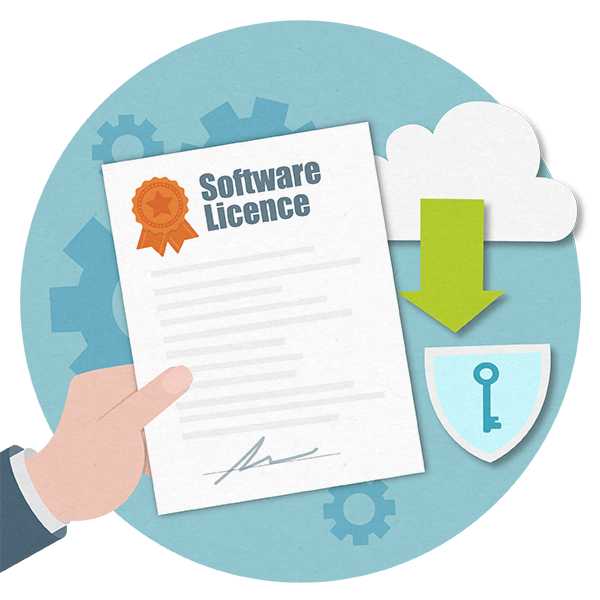Dynamics 365 Business Central Licensing & Pricing
Let's simplify the licensing and pricing jargon! This is your one stop shop for licensing costs, licence types, considerations for current Dynamics NAV users and more. Information is correct at the time of publishing (March 2022) and could be subject to change.


Dynamics 365 Business Central Licensing Options
Let’s deal with those of you who may be looking to buy a completely new Dynamics 365 Business Central licence, as this is probably the simpler model to start with! There are basically two options, both of which are based on a named user basis:
Subscription
You pay a per user, per month fee. This also includes the annual maintenance fee levied by Microsoft, giving you access to future versions. The subscription option provides flexibility in terms of increasing and reducing numbers of users, which is particularly helpful if you have any seasonal impact on the number of people using the system.
Perpetual
You have bought the Dynamics 365 Business Central licence, it’s yours forever and, as long as you pay the annual maintenance fee (known as BREP in the Microsoft world), you are also entitled to access the latest versions. With a perpetual licence you have a set number of users, which of course you can add to, but if you ever choose to remove users then you would have to re-buy them in the future.
If you stop paying the annual maintenance fee you are also prevented from amending your Dynamics 365 Business Central licence, i.e. adding more designers, more users or objects.
Confused about cost? Book a licensing and pricing consultation

Choices for Hosting
Another aspect to consider when choosing your Dynamics 365 Business Central licence is where you plan to host your system. Both subscription and perpetual licences can be deployed on-premise, in your Private Cloud or on a Managed Service (such as the one we offer), but the subscription route offers one more option – Microsoft’s SaaS.
The SaaS option (or Public Cloud as it’s known), offers great value for money, as the hosting cost is included in the user subscription price. There are some limitations, however, such as no access to SQL and being limited to any developments being done as extensions, but if these aren’t barriers for you and you’re happy to be on a shared platform then this route should definitely be seriously considered.
Understand your hosting optionsWant to understand how this could work for your business?

Options for Existing Dynamics NAV Users
- If you are on a version up to and including 2009, then the latest Navision / Dynamics NAV licence that you can purchase is 2009R2.
- If you want to go beyond 2009R2, then your only option is to move to Dynamics 365 Business Central.
- If you are on Dynamics NAV 2013 or later then you can still cut a licence up to NAV 2018.
(P.S. If you’re not interested in moving to Dynamics 365 Business Central, but want to get the most out of your Dynamics NAV, why not take our free Dynamics NAV Health Check? We’ll get to the root of any issues and help you to optimise your platform).
Whether you are the former or the latter, by staying on Dynamics NAV you stay on the same licence model you have today, i.e. concurrent users, but if you move to Dynamics 365 Business Central then your licence model changes.
Try our free health check
Moving to Business Central
If you are currently on a subscription model, then it’s straightforward. When you are ready to upgrade, you stop paying your old subscription and start a new Dynamics 365 Business Central subscription to gain access to the latest version of the software.
For those customers who have a perpetual licence then you have two options when upgrading to Dynamics 365 Business Central:
- Remain on a perpetual licence: Business Central is only available on a named user basis, but Microsoft will give you 3 users for every user which you purchased before May 2019. You continue to pay your annual maintenance (BREP) at the same rate as your old licence – but don’t worry, your licence value does not change even though you’ve increased your number of users.
- Move to a subscription licence: This can be Microsoft SaaS (Public Cloud) or privately hosted. Microsoft SaaS has hosting costs built into the subscription price, and there are discounts available when moving from a perpetual licence.
The hosting options are the same as those detailed earlier for people buying a new licence, and it is worth noting that if you choose the SaaS route and later decide you want to move to a Private or Managed Cloud then it’s easy to do so (and vice versa).
Want to get the most out of your existing system before considering an upgrade project?

Dynamics 365 Business Central Licence Types
Dynamics 365 Business Central can be purchased on two levels – Essentials or Premium (Premium simply gives an additional layer of functionality for manufacturing and service order management). As well as licensing costs, there are the costs associated with the partner you choose to consider - check out our guide for more on how to choose a partner.
Whether you choose Essentials or Premium, there are two types of users – ‘Full’ and ‘Team Member’:
Full Users
These users require access to the feature-rich business applications present in Dynamics 365 Business Central. Examples of Full Users are salespeople, customer service representatives, finance employees, financial controllers and supply chain managers.
Team Member Users
These users need to view data in the system and may complete light tasks such as time or expense entry and HR record updates, but will not need to do any posting in the system.
Dynamics 365 Business Central Pricing
|
|
On-Prem or TNP Managed Service |
On-Prem, TNP Managed Service or SaaS |
||
|
|
PERPETUAL INITIAL |
PERPETUAL OVER 4 YEARS |
SUBSCRIPTION (CSP) ANNUAL |
SUBSCRIPTION (CSP) OVER 4 YEARS |
|
10 Full Users Licence |
£13,410 |
£13,410 |
£6,336 |
£25,344 |
|
10 Team Member Users |
£2,680 |
£2,680 |
£720 |
£2,880 |
|
BREP |
£2,574.40 |
£10,297.60 |
N/A |
N/A |
|
Total |
£18,664.40 |
£26,387.60 |
£7,056 |
£28,224 |
|
|
On-Prem or TNP Managed Service |
On-Prem, TNP Managed Service or SaaS |
||
|
|
PERPETUAL INITIAL |
PERPETUAL OVER 4 YEARS |
SUBSCRIPTION (CSP) ANNUAL |
SUBSCRIPTION (CSP) OVER 4 YEARS |
|
100 Full Users Licence |
£134,100 |
£134,100 |
£63,360 |
£253,440 |
|
200 Team Member Users |
£53,600 |
£53,600 |
£7,200 |
£28,800 |
|
BREP |
£30,032 |
£120,128 |
N/A |
N/A |
|
Total |
£217,732 |
£307,828 |
£70,560 |
£282,240 |
Note - These prices are for ‘Essentials’ users.
BREP (Business Ready Enhancement Plan) is the program that Perpetual customers subscribe to on an annual basis in order to secure access to updates/upgrades to their software.
CSP (Cloud Solution Provider) is Microsoft’s subscription model that applies to Dynamics, Office, Teams and more.
What should you be focusing on when evaluating ERP partners?

The Bridge to Cloud Promotion
The Bridge to Cloud Promotion allows you to order discounted Business Central SaaS licences, while still benefiting from an active BREP. Microsoft’s Bridge to Cloud promotions run until December 31st 2024.
We've created a handy blog with all the details of the promotion with example pricing.
Read more in our blog
Book a Pricing Consultation
Are you finding it difficult to understand the jargon surrounding Business Central licences and their costs? Would you like some expert help in decoding what it all means for your business?
Look no further - we offer a free pricing and licensing consultation to walk you through all of the considerations you need to make when evaluating making the move to Business Central. This can include costs, hosting options, the different licence types and a clear picture of the overall investment you'd be making.
Book your consultation today.png)